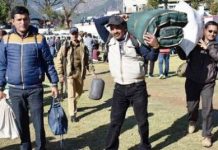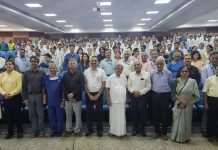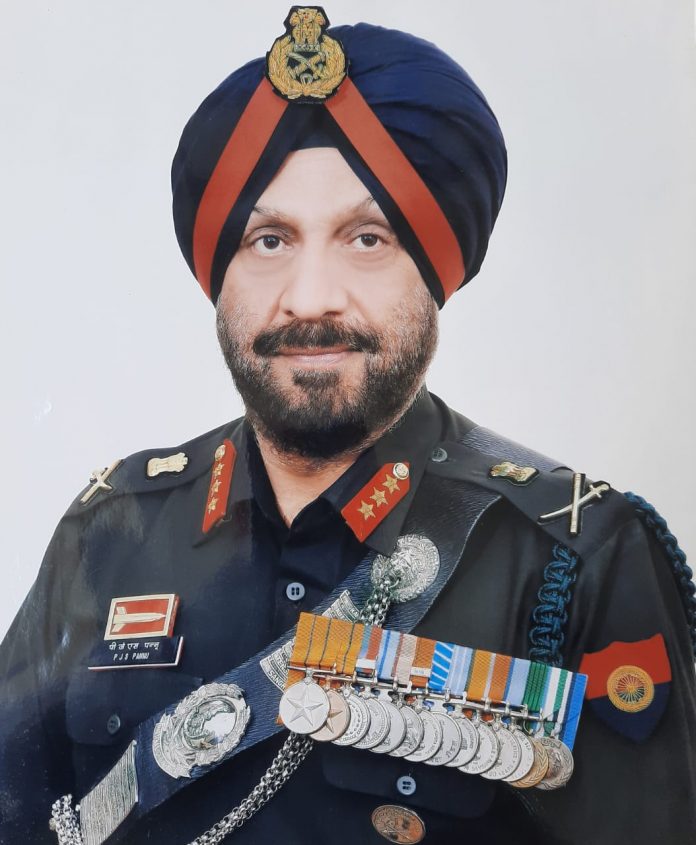Seventy-five years ago, when India became independent, it also suffered a British premeditated, hastily accepted, bloody partition, creating perpetual boundary disputes over territorial claims by new neighbours. On 27 October 1947, contrary to the British advice, troops of 1st Battalion of Sikh Regiment, were speedily air-landed at Srinagar Airfield post Maharaja Hari Singh’s accession in favour of India. The task of the Indian Army was to defend the Kashmir valley from the rapidly advancing Pakistani irregular forces who were sent on a mission to forcibly occupy Kashmir. The Indian Army fought bloody battles over a year to reclaim the lost territories. Kashmir, however got divided as British forced a UN brokered truce, halting Indian Army to reclaim the entire Kashmir. The line where the troops halted, came to be known as the Ceasefire Line (CFL). The British machination must be seen in background of the great game at play.
Fifteen years later, and sixty years ago, in the months of October- November, the Indian Army fought a losing battle in Ladakh and NEFA under the halo of fake diplomacy and fading slogans of ‘Hindi Chini bhai bhai’, where India suffered a humiliating defeat. The only saving grace was that the Chinese retreated from the occupied territories on their own, across the line described as the Line of Actual Control (LAC). The Battles fought in 1965 and primarily in 1971 against Pakistan, helped India reclaim her lost glory, wining back respect of the comity of nations. The gains made by India in Jammu and Kashmir were retained. The new CFL that emerged and signed during the Shimla Agreement was rechristened as the Line of Control (LC).
Last year, India commemorated fifty years of its landmark victory of 1971 War, when India not only liberated Bangladesh, but also took surrender of over 93,000 prisoners of Pakistan Military. Since then, disgraced Pakistan was forced to change her strategy; acquiring a nuclear bomb and using a combination of nuclear blackmail and waging a proxy war on India. Conventionally, Pakistan had miserably failed in occupying Siachen glacier in 1984, and later Kargil heights in 1999. Since then, it went in for a collusive support of China to teach India a lesson. China activated the Line of Actual control a decade ago by repeatedly pushing PLA troops in Sikkim, Arunachal Pradesh and Eastern Ladakh that resulted in a bloody clash of troops at Galwan River in 2020.
The Indian and Chinese troops, as on date, continue to maintain positions in proximity across the LAC, almost akin to longstanding military deployment against Pakistan on the LC. India is not only facing a two-front conventional and unconventional threat from Pakistan and China but also has to cope with niche technologies deployed, as also, new age Space and the Cyber domains, called the fourth and fifth frontiers of war. Such complexities are being looked at by the Indian Defence establishment with a fresh prism, necessitating the setting up of agencies like Defence Space Agency, Defence Cyber Agency and Armed forces Special Forces Division. The Armed Forces continue to face the demands of modernization with home grown solutions, conceiving organizational changes such as theaterisation, tenure based Agniveer soldiers and building a novel Indian Defence Industrial complex. Constraint of budgets and need of modernization remains an issue that confronts India at 75 years of Independence.
The current global scenario is marked with uncertainty and volatility only seen during the great wars. Russia- Ukraine conflict has further polarized the world creating new ‘Cold War’ condition. The UN is stressed to keep her members from being torn apart. The question is staring into the eye; are we heading towards another world war? India is being looked at as an obvious choice that could bring balance and stability. India’s repeated refrain in sanctioning Russia, a traditional ally, in the UNSC is causing concern in the western world. India has her own issues with major portion of its military actively deployed on two fronts. The global economy is going into depression. Trade sanctions and threats have become a norm to win the wars with economic leverages. India must balance itself before it can contribute in balancing the world.
The Russia – Ukraine conflict has prolonged beyond expectations. China, a claimant to being a super-power is making sharp military, political, diplomatic and trade manoeuvres, looking for an opportunity to strike on these fronts and replace US. While the world watched the US – the traditional ‘global policeman’ making a hurried and unexpected retreat from Afghanistan last year, creating a vacuum in the traditional ‘great game’ arena. Attempting to wean India away from Russia on the side, US has leaned back on Pakistan, ostensibly to keep its access to Afghanistan secure, offering them military hardware support. India stands firm on retaining ‘strategic autonomy’ and has made it clear that India’s national interests shall remain paramount while dealing with the world. While India actively joined the QUAD, she has not made any military commitment.
Xi Jinping has managed to secure a third term among controversies of his losing power. Now a more confident Xi would be at ease at home. Putin, a hardwired leader has shown his resilience in fighting a protracted campaign in Ukraine against the western alliances. With Russian energy supplies blocked, how Europe copes up with freezing winters is a matter that would play itself in next few months. Joe Biden, seen as a weak leader of a strong nation, is under test of performance in these challenging times. Pakistan, a state torn by internal conspiracies has managed to keep herself afloat by keeping China, Russia and US in good humour, while its political leadership, a puppet of its military, gives no confidence to people at home. Pakistani Generals notorious for manipulating institutions, have been successful in taming US and Western Think Tanks to play their pipe in the international fora.
Russia, India’s traditional supporter and supplier of military hardware has been pushed into the Chinese fold. How would India balance equation when the divided world has conflicting interests in India. International relations are being dictated by interests in Territory, Trade and now growing significance of Technology – a new factor contributing to Comprehensive national Power (CNP). India has been able to keep its territorial integrity in last 75 years albeit constant aggressive attempts by adversaries. India is aiming for soon achieving a 5 trillion economy and is now the fifth largest economy of the world. India has however been traditionally dependent on imported military hardware and also vital needs of energy, rare earth materials and technology. India has not been able to manufacture world class products that can compete in the foreign markets.
India has been constantly working on improving the investment climate to give stimulus to ‘Make in India’ resulting in self-reliance. With growing Chinese belligerence and disturbed global equations, the world led by US has tightened restrictions on China. Is India going to be a new global destination for replacing China as the Manufacturing hub of the world or would it become the global startup capital? It would be fascinating to know how the world views the future of India. At home and across the globe the role of leaders would be significant to allow India take a global leadership role in the next 25 years. It is time for India to take a new strategic direction if it has to add weight to its punch in the era of Amritkaal.
(About the author : Lt Gen PJS Pannu, PVSM,AVSM,VSM (Retd) is a former Deputy Chief of Integrated Defence Staff. He also commanded 14 Corps at Ladakh, Infantry Division on the LAC (Arunachal Pradesh) and Infantry Brigade on the LC (Uri). He initiated raising of Defence Space and Cyber Agencies, as also Special Forces Division. He is a distinguished Fellow at USI and heads the Military History and Strategy Vertical of Valley of Words.)

























































